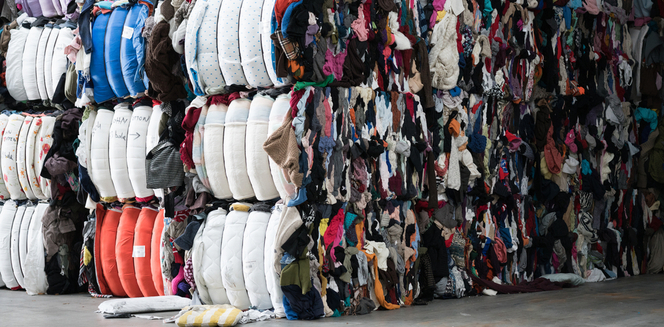Novel technologies to reduce waste and become a blessing for recycled textiles

28 Aug
2020
Waste generation in the textile industry is huge problem as clothes such as jeans, trousers, and shirt are worn several times and dumped with changes in trends. The problem becomes severe to deal with as some types of clothes are difficult to recycle and make them into high-quality garments. However, market players and researchers at universities have found innovative technologies and processes to convert those unused, discarded textiles into fibers and yarns to be used for production of garments. The development is ongoing and commercialization will be carried out in the coming years. The demand for technologies and processes for recycling of textiles is gaining momentum and the market would grow significantly over the next few years. According to the report published by Allied Market Research, the recycled textile market is expected to reach $8.0 billion by 2026. Following are some of the research and development activities taking place across the globe.
Devising innovative methods for production of fiber from recycled clothes is one of the major tasks undertaken by textile manufacturers and universities. Sateri, a cellulosic fiber manufacturer, claimed that it produced viscose fiber through regeneration of textile waste in its commercial production plant. This new fiber has been developed from dissolving pulp extracted from recycling of textile waste by Swedish firm Södra and wood pulp certified by PEFC. The company has been tested the fiber at its production line of Linz Nanjng yarn spinning mill, situated in China. Manufacturing of viscose rayon fiber has become essential as it can lead to production of high-quality garments.
Production of this type of fiber has been on the minds of research team from the Fraunhofer Institute for Applied Polymer Research. The research team has been working with Swedish company re:newcell for development of eco-friendly materials. The company sent cellulose sheets to the research team and asked scientists to make them into viscose rayon fibers. By setting appropriate parameters for spinning and dissolving processes, the team extracted foreign fibers. Using cellulose sheets, the company produced yarn that was a several kilometers long. It was of the same quality as that of made from wood-based cellulose. The team highlighted that the technique is same as the standard process for production of viscose fiber. So, this process can breathe new life into discarded clothes and utilize them for production of garments of high quality. Cotton often ends up in a landfill. However, this process enables cotton to be recycled many times for ensuring sustainability.
Among different technologies developed for recycling textiles, there has been a technology that enables discarded textiles to be processed. Once processing is carried out, it can be used for textile-to-textile recycling. This technology is known as Fibersoft. It is a Near Infrared (NIR)-based technology that categorizes textiles into different categories on the basis of fiber composition and color. It has an ability to categorize nearly 900 kgs of textile per hour. As there are a huge number of textile products, this technology sorts them in only one pass into one of the 45 categories.
Circle Economy has been involved in commercialization of the technology. It outlined that it has been trying to increase the number of categories. The company configured 20 color tones till now. The company aims to raise the number of color tones. The technology is reliable for detecting many types of materials, however, it can be improved for detection few types of materials such as viscose and polyamide. The company has received an overwhelming response from brands, manufacturers, and recyclers for availing the technology. This shows that the need to recycle textiles has been increased, and manufacturers and brands have realized importance of recycling.

Koyel Ghosh
Author’s Bio- Koyel Ghosh is a blogger with a strong passion and enjoys writing in miscellaneous domains, as she believes it lets her explore a wide variety of niches. She has an innate interest in creativity and enjoys experimenting with different writing styles. A writer who never stops imagining, she has been serving the corporate industry for the last five years.
Use of Epoxy Composite Has Skyrocketed in an array of End-use Industries- Explore the Reasons
Avenue: Entire Library membership of Allied Market Research Reports at your disposal
- Avenue is an innovative subscription-based online report database.
- Avail an online access to the entire library of syndicated reports on more than 2,000 niche industries and company profiles on more than 12,000 firms across 11 domains.
- A cost-effective model tailored for entrepreneurs, investors, and students & researchers at universities.
- Request customizations, suggest new reports, and avail analyst support as per your requirements.
- Get an access to the library of reports at any time from any device and anywhere.
Related Post
-
How are Submarine Cables Transforming Global Connectivity with Enhanced User Experience?
-
Endoscopy Procedures: Transformations in Techniques and Applications
-
AI-Powered Video Analytics: How the Product Actually Works for enterprises
-
Painting Robots: Transforming Precision Coating and Creative Applications
-
Innovations in Pharmacovigilance Systems Advancing Patient Safety
-
Understanding Edge Security: Keeping Data Safe Near the Source
-
Exploring the Use and Advancements of 3D Laser Scanners in Professional Applications
-
Reinforcing Industrial Controls with Smarter Tools and Training








